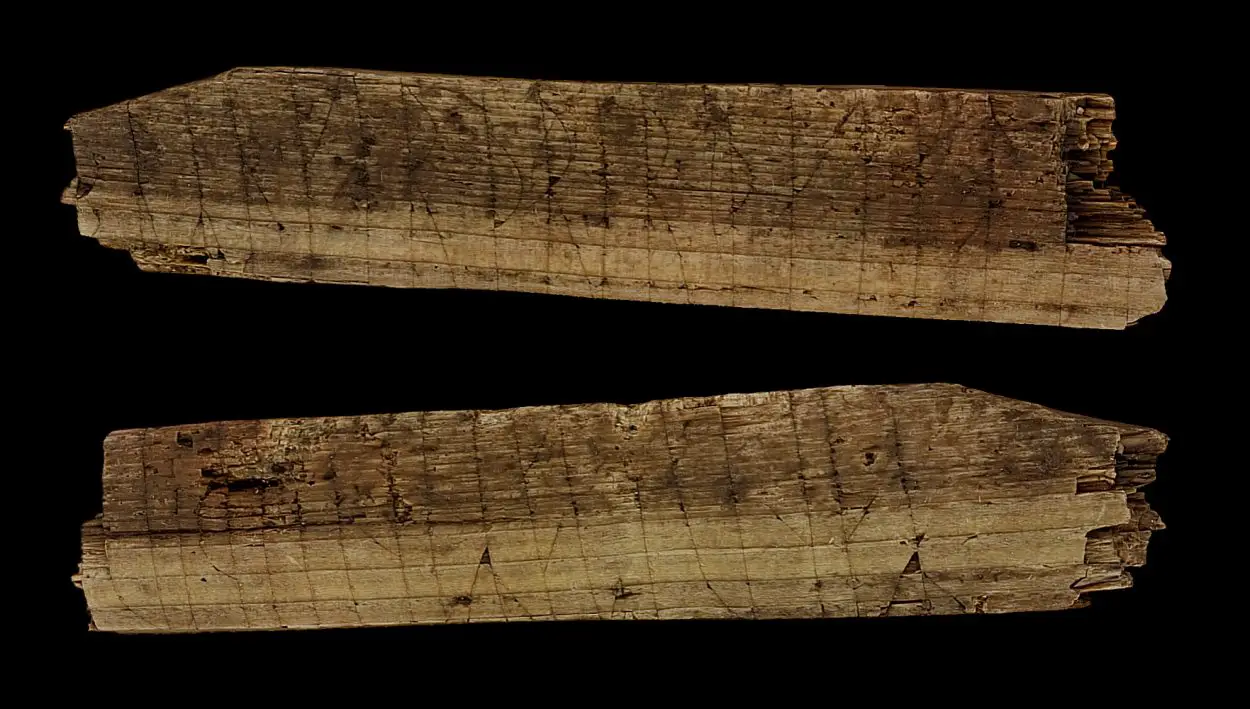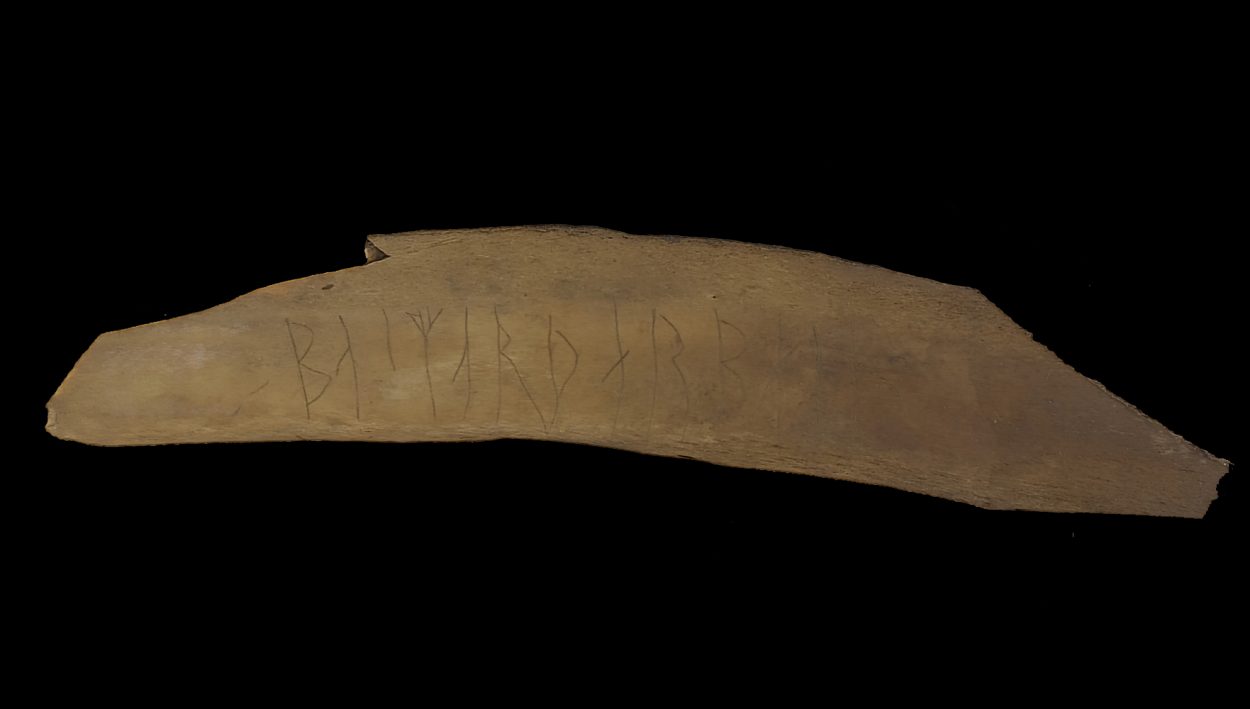Archaeologists from the Norwegian Institute for Cultural Heritage Research (NIKU) have uncovered two objects in Oslo inscribed with Norse runic text.
Excavations were being conducted in Oslo’s Medieval Park ‘Middelalderparken’ in what was once the southern part of the medieval city of Oslo. The park contains the ruins of St. Clement’s Church, St. Mary’s Church, and the former Oslo Kongsgård estate royal estate.
Researchers discovered a bone inscribed in Norse and a piece of wood with inscriptions on three sides in both Norse and Latin.
Professor Kristel Zilmer from the University of Oslo, who specialises in writing culture (runology) and iconography has studied the finds and given some initial interpretations of the text.
Although the piece of wood is partially damaged, Zilmer identified “manus Domine / i” in Latin and the female name “Bryngjerd, er det / som det…” in Norse. The wood also has eight small signs that can make sense as both a statement in Latin or a continuation in Norse, which is possibly the phrase “It is true”.

Manus means “hand” and Dominus “lord, God”, which could be part of a Latin prayer “In manus tuas, Domine, commendo spiritum meum. Redemisti me Domine, Deus veritatis”, meaning “Into your hands, O Lord, I commend my spirit. You have redeemed me, O Lord, O God of truth”.
The bone, which comes from a large domestic animal such as a horse or cow has thirteen clear runes on one side and one weak inscribed rune on the other. The bone discovery is the first runic bone found in Oslo in over thirty years and either refers to a personal name or nickname by the inscription “basmarþærbæin”, or simply describes the artefact by four concluding runes bæin (Norse bone) that refer to the bone itself.
“Every new discovery of runes is important and teaches us more about what people in the Middle Ages were interested in and wanted to share with those around them. These two rune finds are a reminder of the diversity of knowledge and interests of the people of that time” said Zilmer.
Header Image – Bone artefact with Norse runes – Image Credit : NIKU







